The Ultimate Guide to Therapy Office Décor
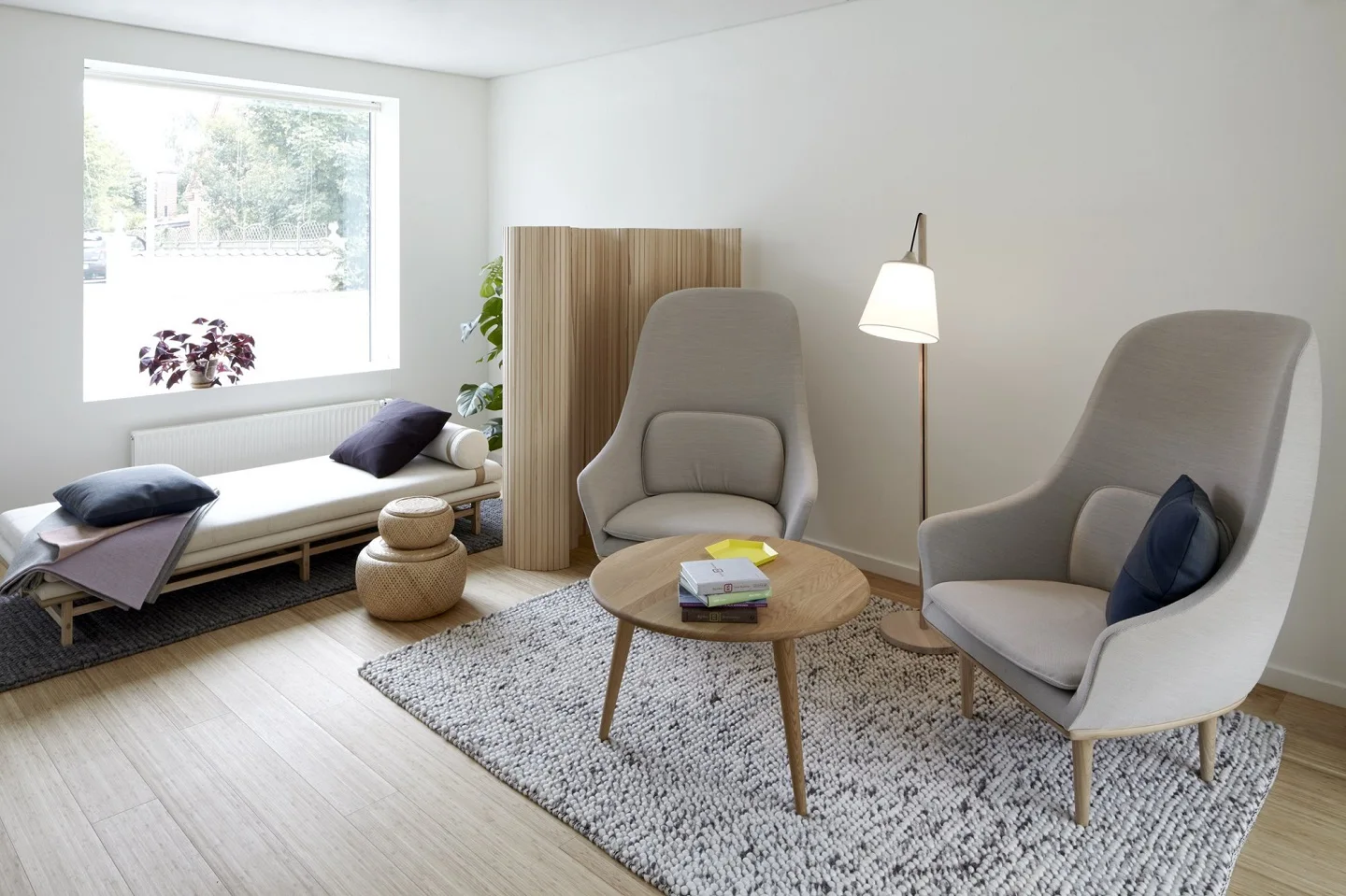
The therapist’s office décor plays a crucial role in creating an environment conducive to therapy and the overall well-being of the therapist and clients. A well-designed therapist’s office provides a comfortable and safe space for clients to open up and share their thoughts and emotions. A welcoming environment can help alleviate anxiety and create a sense of ease, allowing clients to feel more relaxed and willing to engage in therapy.
Calming therapist office décor
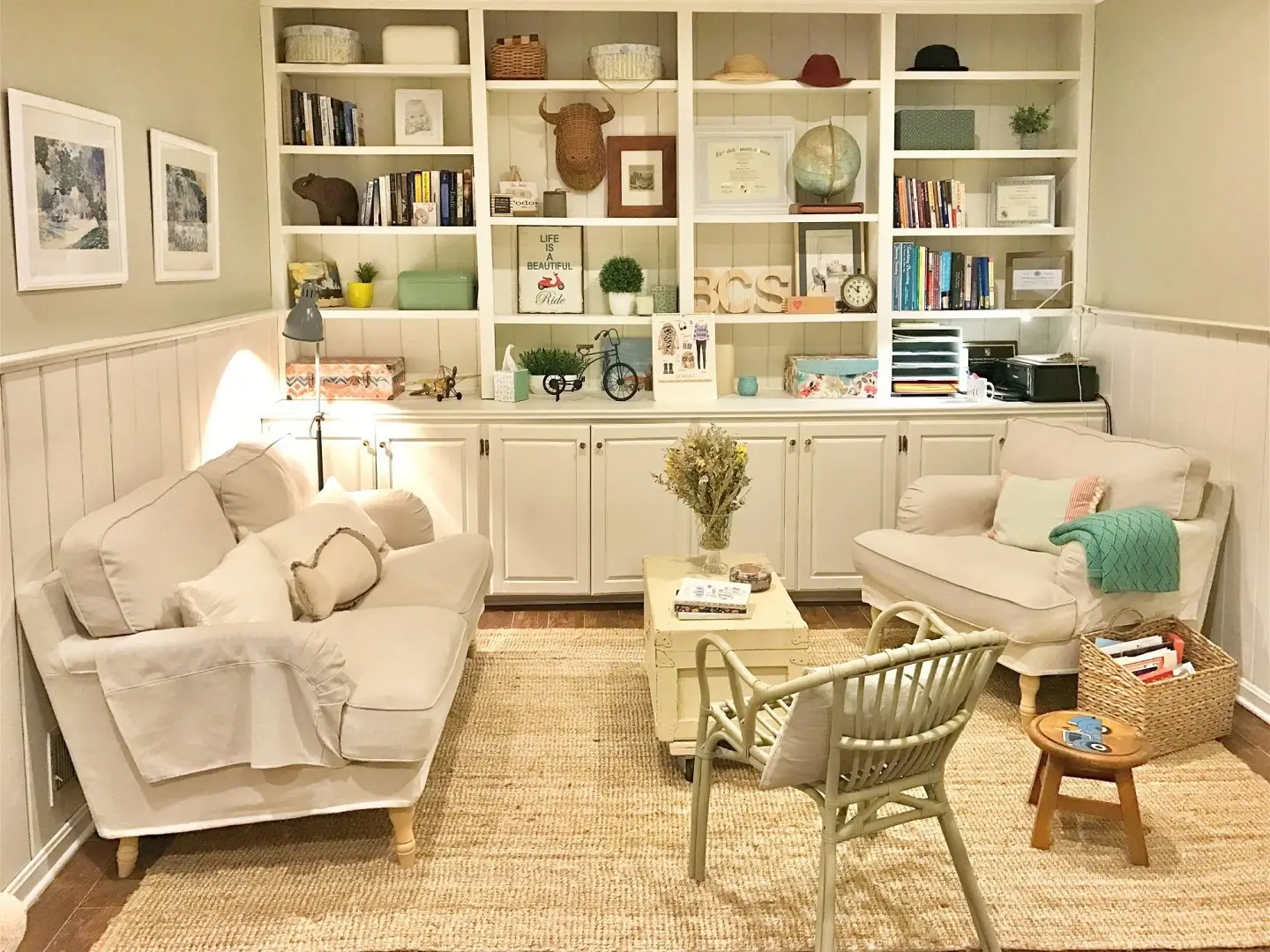
When considering the décor for a calming therapist’s office, it’s important to create an environment that promotes relaxation, comfort, and a sense of tranquility. In the following, we will examine the most important factors that should be considered in designing the decoration of the therapist’s office.
Tip: Explore different types of interior design styles.
Color schemes choose soothing colors with calming effects, such as soft blues, greens, or neutrals. Avoid bright or jarring colors that may stimulate anxiety.
Lighting
Opt for natural light whenever possible. Soft, warm lighting creates a cozy atmosphere. Use adjustable blinds or curtains to control the amount of light entering the space.
Comfortable seating
Select comfortable and supportive seating options for both the therapist and clients. Consider incorporating plush chairs or sofas with soft, calming upholstery.
Natural elements
Introduce elements of nature, such as plants, flowers, or a small indoor waterfall. These can bring a sense of peace and tranquility to the space.
Minimalism and clutter-free environment
Keep the space clutter-free and minimize distractions. A clean and organized space develops a sense of calm, promotes focus during therapy sessions, and creates a warm and inviting atmosphere, making clients feel more comfortable.
Art and décor
Select artwork and décor that evokes a sense of serenity. Consider nature-inspired paintings, abstract art, or peaceful landscapes. Avoid artwork that may be too stimulating or provocative.
Soundproofing
Ensure the office has proper soundproofing to minimize external noise and create a peaceful environment to enhance relaxation and confidentiality during therapy sessions.
The aim is to create an environment that promotes relaxation, emotional well-being, and open communication. Consulting with an interior designer experienced in creating calming spaces may also be beneficial to achieve the desired atmosphere.
Zen therapist office décor
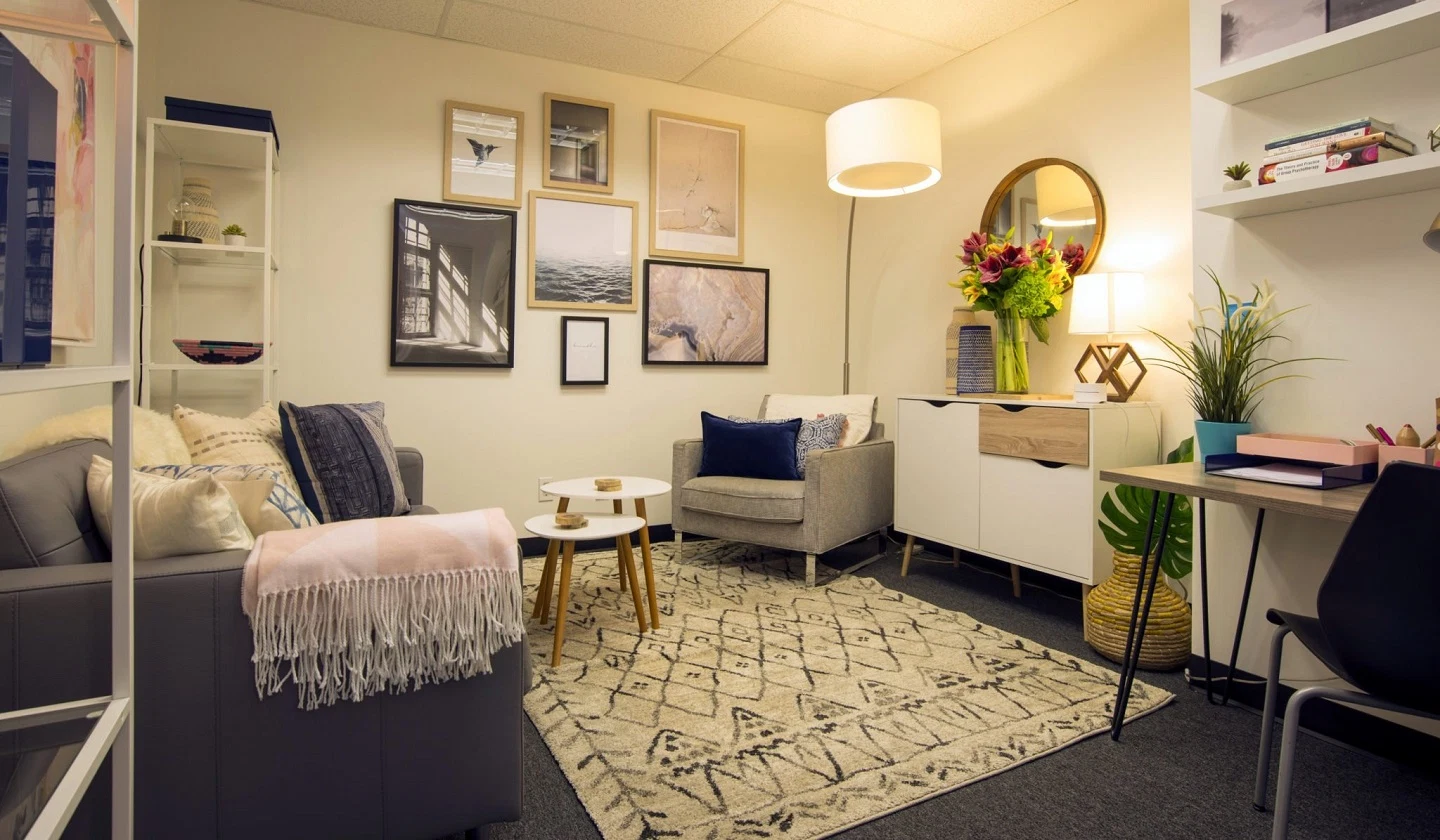
Zen therapist office décor focuses on creating a serene and harmonious environment that promotes mindfulness, introspection, and emotional well-being. Inspired by Zen principles and minimalism, this décor style aims to provide a calming and meditative space for both the therapist and clients. Here’s a description of a Zen therapist’s office décor:
As you step into the Zen therapist’s office, you are immediately greeted by tranquility. The minimalistic color palette features earthy tones like soft greys, whites, and warm beiges. These neutral hues create a soothing backdrop that allows the mind to relax and focus.
The soft and diffused lighting casts a gentle glow throughout the space. Delicate paper lanterns suspended from the ceiling emit a warm, ambient light, adding to the serene atmosphere.
The furniture is simple and uncluttered, embodying the principles of minimalism. A low, cushioned sitting area invites clients to find comfort and grounding during sessions. The upholstery is made of natural fibers, such as cotton or linen, in calming shades of muted greens or light blues.
Natural elements are thoughtfully incorporated into the décor. A small indoor Zen garden with smooth pebbles and a miniature waterfall rests in one corner, evoking a sense of serenity. Bonsai trees and potted plants bring a touch of nature indoors, symbolizing growth and renewal.
The air carries a subtle scent of calming essential oils like lavender or sandalwood, gently diffused in the room. Soft, meditative music plays in the background, creating a soothing soundscape that aids relaxation and reflection.
Overall, the Zen therapist’s office décor creates an atmosphere of tranquility, fostering a sense of mindfulness and emotional well-being. This environment encourages clients to explore their thoughts and emotions calmly and centrally, facilitating a deeper connection with their inner selves.
Tip: Explore more about small office design.
Modern therapist office décor
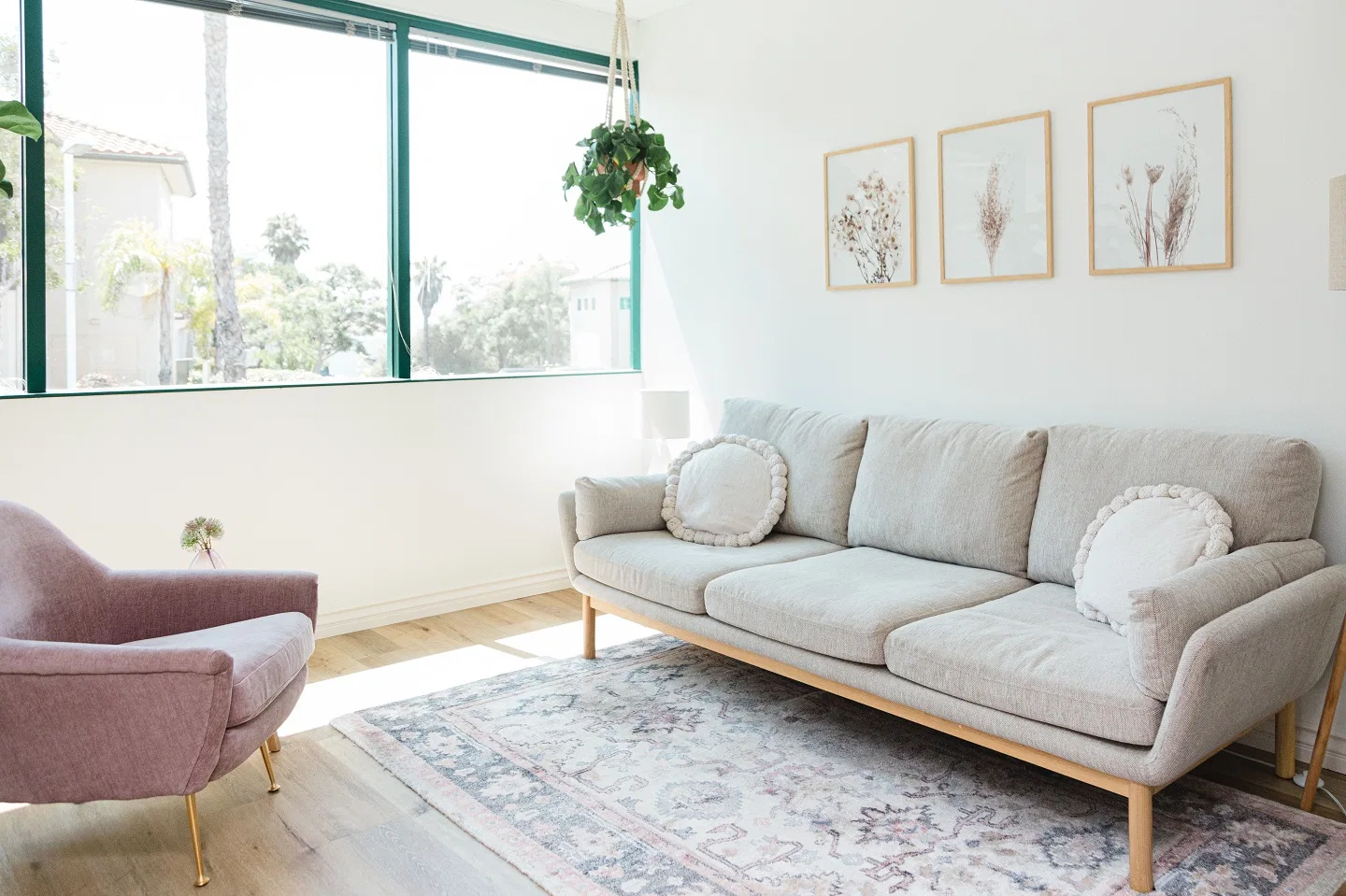
It’s important to incorporate contemporary design elements that create a welcoming, professional, and aesthetically pleasing environment to achieve a modern therapist office décor. Here are some strategies to consider for modern therapist office décor.
Minimalistic Design
Embrace the principles of minimalism by keeping the space clutter-free and focusing on clean lines and simplicity. Opt for sleek and functional furniture that maximizes space efficiency. Avoid excessive decorations or unnecessary embellishments.
Neutral Color Palette
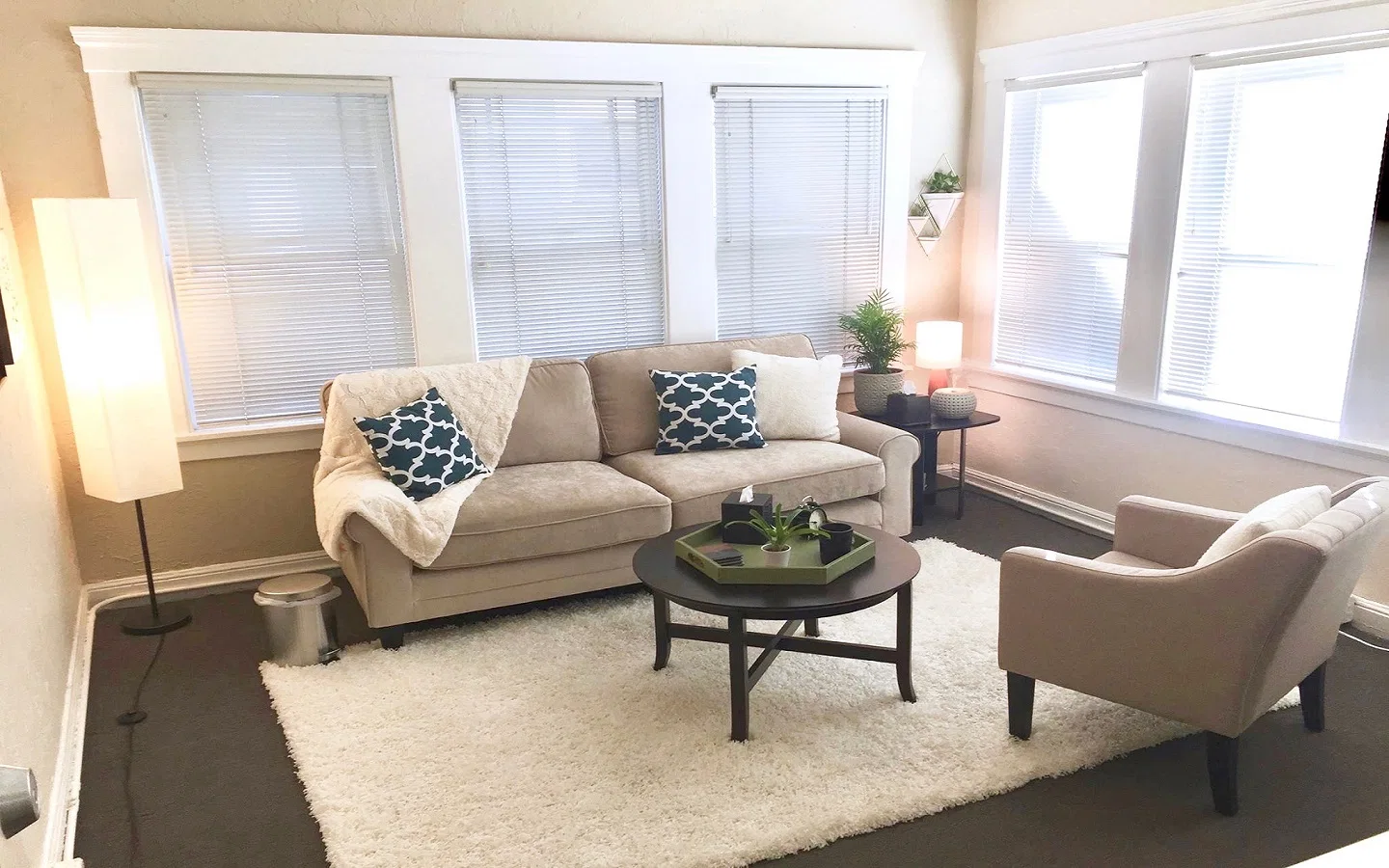
Choose a neutral color palette as a foundation for your modern décor. Shades of white, grey, beige, or taupe can create a clean and timeless look. Consider incorporating pops of color through accent pieces or artwork to add visual interest.
Statement Furniture
Select modern furniture pieces that make a statement. Choose comfortable seating with contemporary designs and ergonomic features. Look for leather, polished wood, or metal furniture to create a sophisticated and sleek atmosphere.
Technology Integration
Incorporate technology seamlessly into the office. Install modern and efficient lighting systems with adjustable settings to create different moods. Ensure accessible power outlets and charging stations for clients to use their devices comfortably.
Art and Graphics
Incorporate contemporary artwork or graphics that resonate with the therapeutic environment. Consider abstract paintings, geometric patterns, or digital art that evoke a sense of modernity and creativity. Art can serve as a conversation starter or provide visual interest.
Functional Storage Solutions
Invest in stylish storage solutions that keep the space organized and clutter-free. Utilize modern cabinets, shelves, or storage ottomans to store therapeutic materials and paperwork discreetly. Optimize space by choosing multi-purpose furniture.
Texture and Materials
Merge different textures and materials to add depth and visual interest to the space. Combine smooth surfaces like glass or metal with textured elements like woven fabrics, plush rugs, or natural materials like wood or stone.
Considering these strategies, you can create a modern therapist office décor that reflects professionalism, comfort, and a contemporary aesthetic. Remember to tailor the design to your preferences and your client’s needs, creating a space that fosters a positive therapeutic experience.
Optimal Color Design of Therapist Office
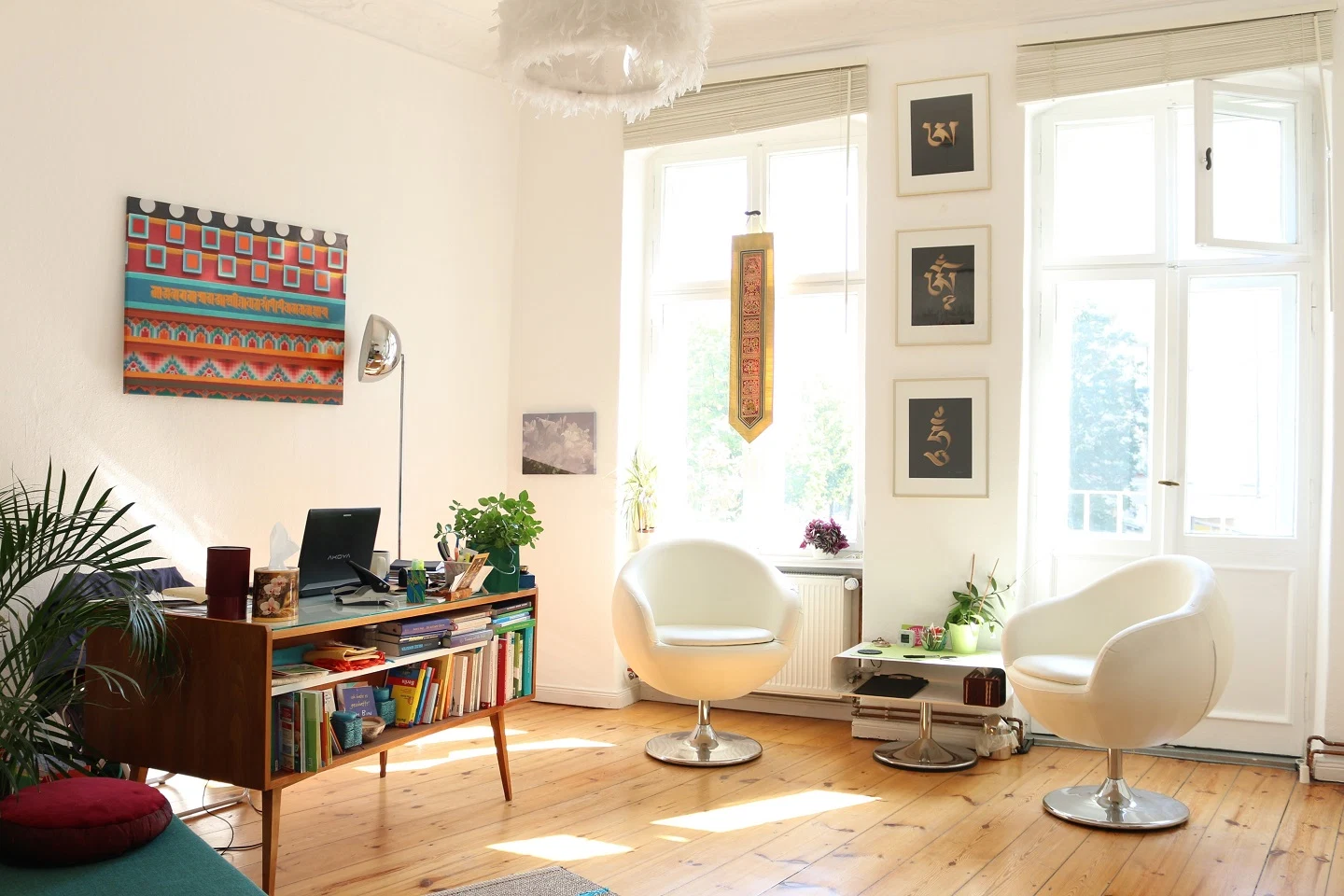
The choice of colors in a therapist’s office décor can significantly impact the overall atmosphere and the relaxation of patients. Colors can evoke emotions, influence moods, and create specific psychological responses. Here’s an exploration of the effects of color on therapist office décor and the relaxation of patients:
Blue
Blue is associated with calmness, tranquility, and serenity. It helps decrease anxiety and promote a sense of relaxation. Lighter shades of blue, such as pastel blues or soft aqua tones, are soothing and can create a sense of openness and clarity.
Green
Green is associated with nature, balance, and harmony. It has a calming effect and can help create a sense of peace and rejuvenation. Green hues, especially soft greens or muted earthy tones, can help patients feel grounded and connected to nature.
Neutral tones
Versatile neutral colors like white, beige, and light gray can create a calming and harmonious environment. These colors provide a sense of simplicity, balance, and neutrality, allowing patients to focus on their thoughts and emotions without distractions.
Lavender
Lavender is a color associated with relaxation and tranquility. It has a calming effect and can help reduce stress and promote a peaceful mind. Incorporating lavender accents or using them as a dominant color in the décor can provide a soothing environment.
Warm earth tones
Warm, earthy colors like soft browns, gentle oranges, and muted terracotta can create a cozy and grounded atmosphere. These colors can evoke feelings of warmth, stability, and security, which can help patients feel more at ease during therapy sessions.
Yellow
Yellow is associated with energy, happiness, and positivity. It can help uplift moods and create a sense of optimism. However, it’s important to use yellow sparingly and in muted tones, as intense or bright yellows may evoke feelings of restlessness or anxiety in some individuals.
Red
Red is a highly stimulating color associated with passion and energy. It can increase heart rate and stimulate excitement. While red may not be suitable as the dominant color in a therapist’s office, incorporating subtle touches of red, such as in artwork or decorative accents, can add warmth and energy to the space.
When designing a therapist’s office, it’s important to consider individual patients’ specific needs and preferences. Some patients may respond differently to certain colors based on their associations and experiences. It’s always a good idea to balance and create a harmonious color palette that promotes relaxation, fosters a sense of calm, and provides a supportive environment for therapy sessions.



Did you find what you were looking for?